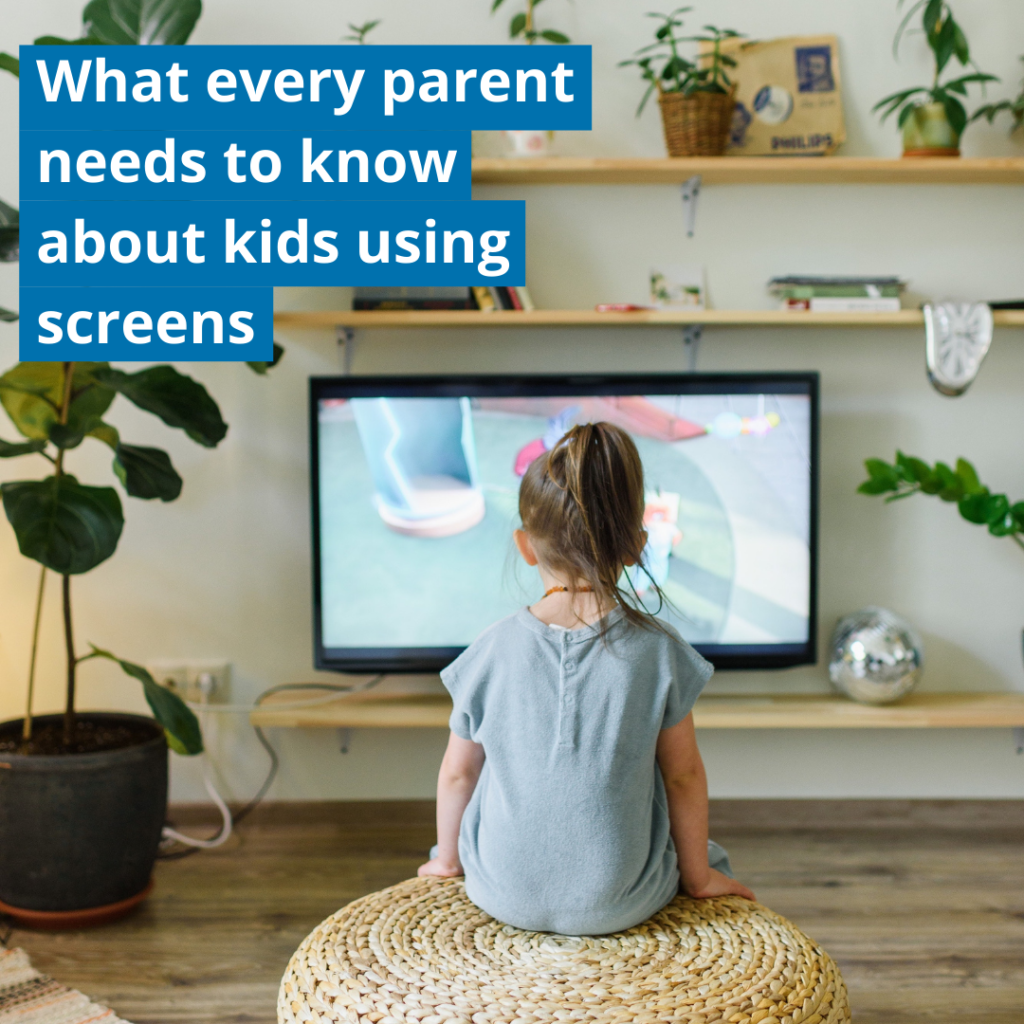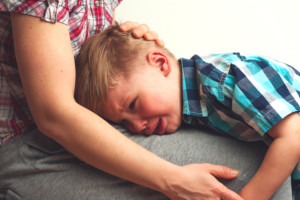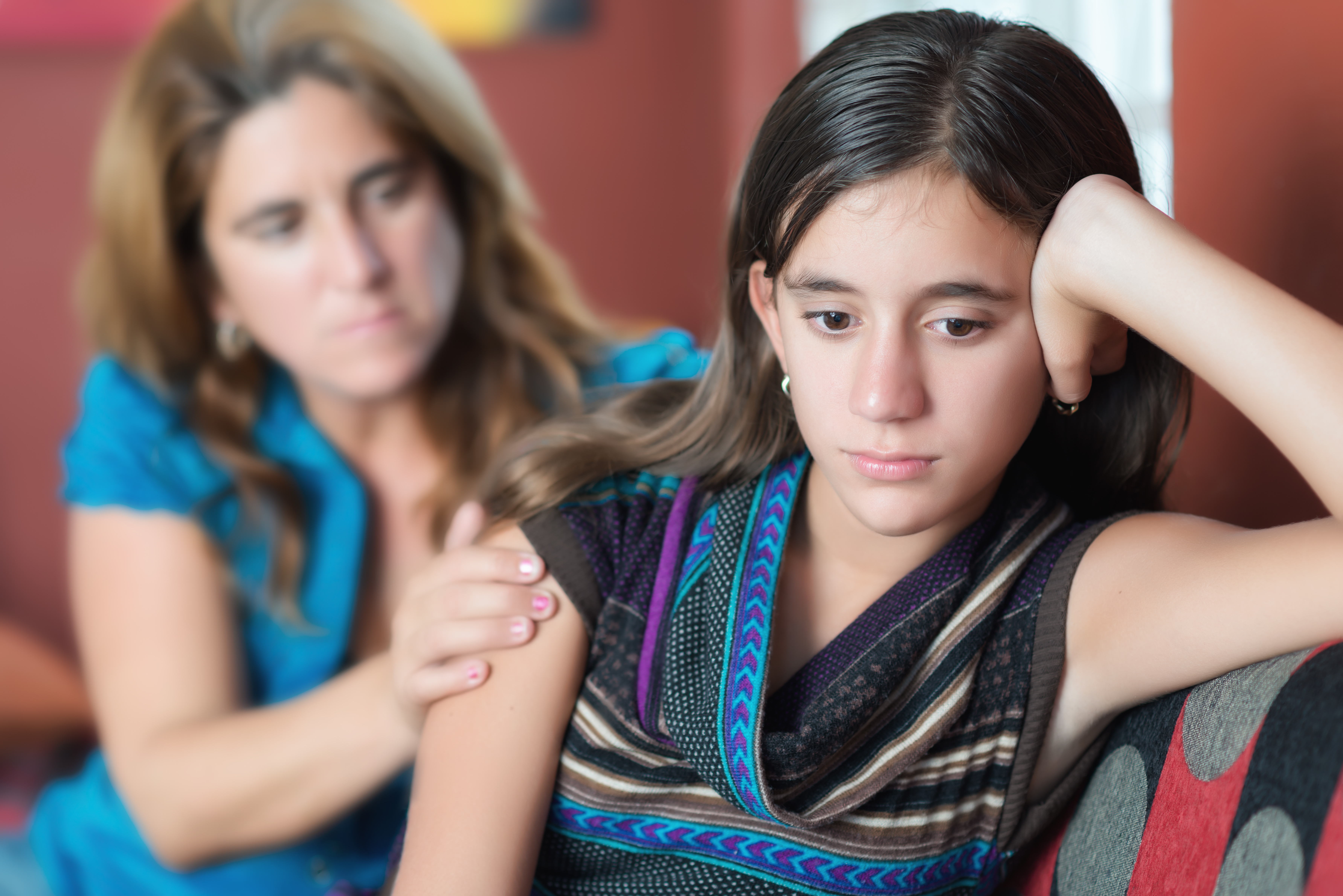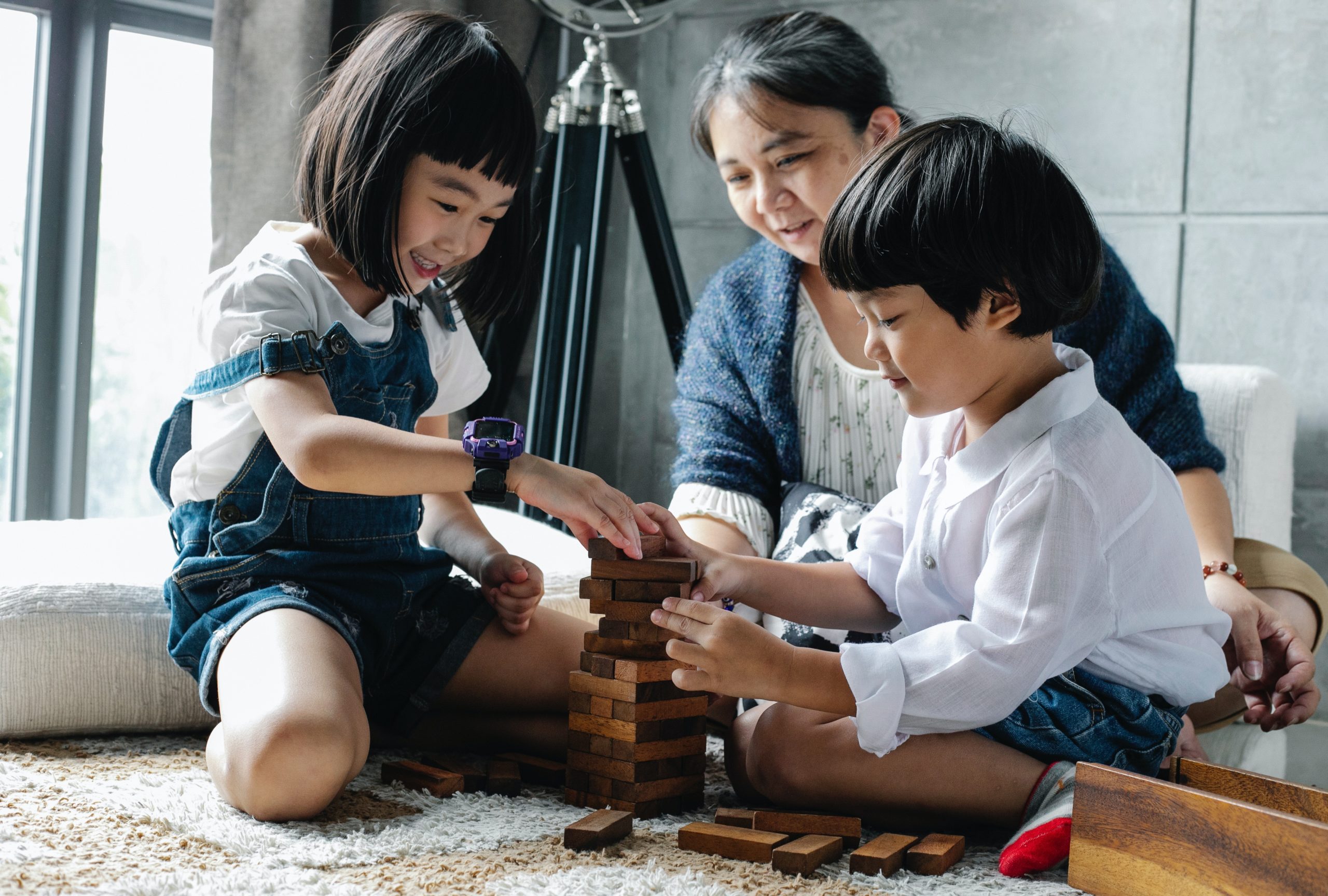 By Genevieve Simperingham
By Genevieve Simperingham
First published in The Natural Parent Magazine.
Kids just love being on those screens and hate having to turn them off! We parents (often guiltily) love how all becomes calm and quiet when our child disappears into the digital world. Oh the relief! Oh the guilt!!
We love saying yes to that which makes our kids shriek with excitement. And cringe to deal with the resulting pleas, begging, whining, negotiating, protests, meltdowns and arguments when holding firm to the screen not being on! What parent hasn’t, at some point at least, exclaimed they want to throw all devices in the bin out of sheer exasperation!
See Part II of this article; Navigating Screen Use for some ideas to create balance in your home.
You might also enjoy the article and video: Talking to kids about screens, diet, weight and exercise
Is technology helping or hindering?
There’s so much confusion and conflicting information about the extent that the technology is helping or hindering. More and more schools, and even early childhood centres, have introduced computers for educational purposes. But we now know from the science (which I’ll touch on below) that it’s no mystery why our children crave to be on those screens. It’s no wonder they have such fierce desire and passion. It’s also no mystery why there’s an equal and proportional decrease in the amount of time children spend in self-directed imaginative play.
We’ve all noticed the slippery slope of kids spending more hours glued to screens and less imaginative play and time outdoors. Now the science emerging reflects that the slippery slope is even more slippery than we thought! Are we bringing up a generation of kids who are being conditioned to expect to be entertained? Kids who have shorter and shorter attention spans?
In these videos Parts I, II and III Genevieve tackles the topic of kids using TV and screens. She talks about how to encourage self-directed play and encourage their intrinsic motivation to be creative and to learn following their curiosity and how to preserve these instincts. Available to Peaceful Parent Village Members
“My toddler screams when I take the iPad away!”
As long as I’ve been in the field of helping parents, there has always been a steady stream of questions from conflicted parents grappling with their child’s screen use. And an interesting trend to note in recent years has been the ages of said children. They have been getting younger and younger.
More children are using screens more of the time and more parents are using screens more of the time. So kids using devices has become “just what they do”, “the way of this new generation”. We’ve become so reliant on screens that even the thought of challenging this can feel immensely stressful to most of us. Myself included! It’s our human nature to feel safety in numbers. When something becomes a habit shared by the majority, there’s implied reassurance that “surely it must be ok”.
So what does the science say about the impacts of screens?
Scott Duncan, an Associate Professor and Researcher at AUT is a key player in the evolving research in this area. His fascinating longitudinal study Growing Up in New Zealand followed the development of more than 5,000 children. The study found that children under two spent an average of 1.5 hours a day on screens!
Last year we invited Scott to be a keynote speaker at our Natural Phenomena Nature Education Conference, a professional development conference which aims to empower the movement of reconnecting children to nature and nature-based education. The stats and facts he rolled out were fascinating! The study found that only 30% of NZ kids regularly climb trees or play rough and tumble games, “which is quite a small proportion compared to the 80s or 90s”. He’s a big advocate for providing children with as many opportunities as possible to be active and spend time in nature.
Scheduled activities plus time on screens all result in a significant decrease of unstructured and free play
Scott explains that there’s a cost to overscheduling kids. The study showed a correlation between young children who exceeded the recommended screen time having poorer motor skills than those who were less exposed to the technology. It also found that two-year-olds exceeding the daily screen time limit were more likely to experience behavioural and health problems at about 4½ years of age.
He makes links to kids of all ages experiencing an increase in problems with their physical, social, emotional and mental health as a result of too much time spent on screens. The results relate to the time spent on screens. Plus, decreased time spent engaging with others, less imaginative play and less time spent outdoors.
The Plug-In Drug
In her book, The Plug-In Drug: Television, Computers and Family Life, author Marie Winn describes that television’s rapidly changing visual images induce a type of coma in the creative part of a child’s mind. Compromising the brain’s interplay with imagination. Winn summarised the influence of screens on language development stating:
“the major effects result from the varied verbal experiences the child will not have had as a result of his or her time-consuming involvement with television, the hundreds or thousands of words not spoken and responded to by another human being, the question is not asked and answered, the conversations not had.”
Sean Parker the original president of Facebook has recently said “We’ve created a monster and we don’t know what this is doing to children’s brains”. But claiming “we don’t know” is becoming less valid as more of the science comes to light for the public.
This whole movement of TVs and now handheld devices has been moving so fast that none of us have had a chance to catch up.
Our love-hate relationship with technology!
This whole movement of TVs and now handheld devices has been moving so fast that none of us have had a chance to catch up. Now most of us have become mercilessly attached to the hugely alluring benefits of the highly addictive digital world. As I “write” on my keyboard at my desk with not one but two screens in front of me!
So, for what it’s worth, if any twinges of guilt, shame or pressure come up as you read this, know that we’re all in this together. We are all grappling with our kids growing up in an increasingly digital world. We’re all constantly striving to increase the happiness and harmony in the family. Whilst lamenting that it’s not quite healthy and balanced as we’d like it to be! Yet I believe we’re all doing our best while juggling so much on a daily basis.
To gain some practical ideas about how to manage screen use in your family, read Part II from this Natural Parent Magazine article Navigating Screen Use.
Does the kind of screen make a big difference?
Last year I watched an interview with Dr Nicholas Kardaras, a US Psychologist and addiction expert on the AM Show. [i] Dr Kardaras said:
“I think it’s the epidemic of our times, I started researching this about ten years ago and I think we’ve experienced a seismic shift where we’re now seeing clinical and neurological disorders related to screen time and I think we of a certain age have been asleep at the switch, I think we weren’t aware of how potentially damaging some of these devices could be.” [ii]
Brace yourself for this next bit!
He went on to describe:
“so if you look at the MRI of a coke addict and the MRI of a video game addict, they look exactly the same, the prefrontal cortex, which is the executive functioning shrinks. It’s a hyper-stimulating, dopamine activating, adrenaline surging stimulant. And we’re finding it has the same effects as a narcotic.”
He asserts that he’s not anti-technology, but that “children’s brains aren’t yet developed enough to handle something so stimulating”. Kardaras believes that the intersection of technology and adolescent mental health issues is related. He connected it to our adolescent suicide crisis here in New Zealand.
He discerns the difference between kids watching television (which most of us grew up with) and modern “hyper-stimulating glowing screens”.
“Modern screens are qualitatively different, they’re immersive and interactive and they have a more dopamine-elevating effect.”
The more mindful we are of why we’re holding boundaries around screen use, the more clarity and confidence we can share with our children. We can avoid it becoming a power struggle when we show them that we really are caring for them and protect them while continuing to listen to their thoughts and feelings on the subject.
First published in The Natural Parent Magazine
References
[i] https://www.facebook.com/TheAMShowNZ/videos/1177514039048244/
[ii] https://manhattanneighbors.org/kardaras/
Genevieve Simperingham is a Psychosynthesis Counsellor, a Parenting Instructor and coach, public speaker, human rights advocate, writer and the founder of The Peaceful Parent Institute. Check out her articles, Peaceful Parenting eCourses, forums and one-year Peaceful Parenting Instructor Training through this website or join over 90,000 followers on her Facebook page The Way of the Peaceful Parent.










In addition to the addictive nature of ‘smart’ (really dumbing) phones, there are other grave risks & problems. While car accidents are the primary cause of death an serious injury in teenagers between 16 to 19, that risk increases four-fold when mobile phones are involved.
Algorithms designed to increase use (increase addiction) and sell more products (increase consumerism), tend to favor inaccurate, controversial and decisive information over factual information. One result is an increase of communicable diseases as a consequence along with increased social disharmony and reduced emotional and intellectual intelligence.
Some additional unknowns include the long term effects of the new 5G radiation and what could happen to the volumes of information held by many companies on individual phone users. Parents already know about the authority of the phone taking over parential authority. So it’s worthile taking positive action to learn how to minimise these problems while enjoying some of the benefits this technology has to offer…
[…] do or have what they want to have. They need our genuine heartfelt empathy when they struggle with not being allowed to go on the screen or eat that sugary food or have that new […]
[…] Aggression is a desperate attempt to gain relief from an intense buildup of frustrations. To further understand the vicious sugar and processed food craving cycles, read my article on food and mood. Or to understand the negative impacts of too much screen exposure, read my article: What every parent needs to know about kids using screens. […]
[…] in a shutdown that looks like defiance. This can also happen through over-exposure to violence (on screens or in real life) that’s more than a child can […]
[…] tempting to immediately distract them with a treat like something sweet to eat or put on the iPad (if you use that). The risk here is that your child is learning to dissociate and disconnect, which […]